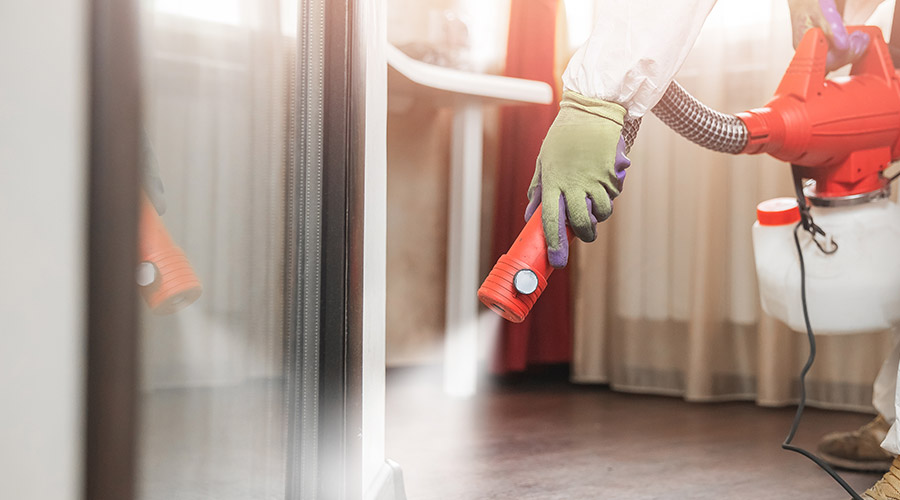Hospitals and other healthcare facilities are expected to provide a safe and healthy environment for patients and a positive working experience for staff. The physical and emotional health of the nurse has a direct impact on the quality of care delivered.
It is vital for hospitals to focus on and enhance the ergonomic conditions of their staff’s environment to improve productivity and retention. Improved seating, better work tools and new technology all contribute to a more ergonomically-friendly healthcare space. The not so obvious contributor to nursing comfort and health is the floor.
The average age of today’s nurse is 50 years old. They work 10 to 12 hour shifts, walk numerous miles in one day and experience other physically demanding aspects of their job.
According to the Bureau of Labor Statistics, injuries among healthcare workers rank among the highest by industry. Musculoskeletal disorders account for one-third of all occupational injuries reported to employers, while back, leg and foot fatigue follow closely behind. It’s a main reason why designers, facility managers and healthcare administrators are paying more attention to create environments that support the healthcare workforce.
Flooring’s new role in healthcare design
Most traditional flooring products provide little, if any, ergonomic relief and can consequently contribute to pain, discomfort and fatigue in healthcare staff. Flooring performance was once solely measured by durability, maintainability, patient mobility and affordability. While those characteristics are still important, today we are entering a new age where expectations for a floor are changing and we are asking it do more.
When building and designing a space, the focus of the work environment must be on people and not just about product. It should be about how flooring and other materials can enhance the lives of patients, residents and staff. This is achieved by specifying a flooring product that is more appropriately designed and engineered for healthcare applications.
Research reveals built environment relationship to wellness
Evidence-based design studies for healthcare facilities conducted by The Center for Health Design indicate a clear relationship between the built environment and the impact of flooring on nurse wellness. These studies also reveal the effect on the patient experience and health outcomes. A nurse that is not fatigued, stressed or in pain provides better quality of care at bedside.
Hospital staff who have experienced ergonomic flooring report better underfoot comfort and relief and also often mention the reduced noise and acoustic properties of the product. Nurses have even told us they requested reassignment to other hospital departments because of the better flooring areas.
An added benefit – according to research by The Center for Health Design, flooring products that reduce noise and provide superior acoustic properties also support the patient healing process, and reveal how ergonomics is playing a much larger role in product specification.
Additional studies are underway now, including a Pebble Project focused on how flooring may reduce the risk of injury from patient falls, a concern that has both personal and financial ramifications for the patient and provider. These study results are due out in early 2017.
Drawing from lessons learned through evidence-based design research, the direction of designers and architects today is away from the sterile, institutional environment to looks that are more natural, warmer and homeopathic in design. This lends itself to influence from the hospitality industry with the focus on providing a soothing, pleasurable environment for patient, visitors and staff.
The science behind optimal flooring
To understand the science behind optimal flooring one must factor force reduction and energy restitution, or the storing and returning of energy. Force reduction measures the amount of energy the floor will absorb when stepped on. Energy restitution measures the amount of energy that is returned from the flooring to the body when a step is made. These are the key components to consider when selecting the right flooring for a healthcare setting.
With a softer floor, more energy will be absorbed by the floor and less energy will return to the foot. The result – more force will be required to take each step. Alternatively, the harder the floor, the greater the return of energy to the foot, resulting in more discomfort to the body. Finding the optimal balance between the energy the floor should absorb and the amount that should comfortable be returned to the body is essential.
Ecore’s Forest rx flooring product, for example, uses a patented technology called itstru to fuse a Polyflor vinyl wear layer to a 5mm Ecore recycled rubber backing. It has been tested and shown to significantly reduce fall impact as well as provide excellent foot-fall reduction and energy return compared to other traditional resilient floorcoverings. Additionally, Ecore’s Rx products are also able to reduce structure-borne sound, providing a much quieter space.
Conclusion
Designers, architects and specifiers are paying much more attention to ergonomic materials in the healthcare setting including how a floor – the foundation of the healthcare environment design – can contribute to nurse comfort and health. When healthcare staff have a better quality of life it impacts the quality of care they provide, which in turn can contribute meaningful improvements to patient care and overall satisfaction rates
Specifying a more comfortable, ergonomic flooring material can contribute to reduced chronic pain to improve productivity and patient quality of care, reduce absenteeism and workman comp claims, and lead to an overall improvement in quality of life for dedicated healthcare providers.
Mark Huxta is healthcare director of sales for Ecore.

 Barriers to Infection: Rethinking Mattress Cleaning
Barriers to Infection: Rethinking Mattress Cleaning Over 1 Million Individuals Affected in Community Health Center Data Breach
Over 1 Million Individuals Affected in Community Health Center Data Breach Prospect Medical Holdings to Sell Crozer Health to Non-Profit Consortium
Prospect Medical Holdings to Sell Crozer Health to Non-Profit Consortium The Top States for Pest Infestations
The Top States for Pest Infestations Ground Broken on Wichita Biomedical Campus Project
Ground Broken on Wichita Biomedical Campus Project